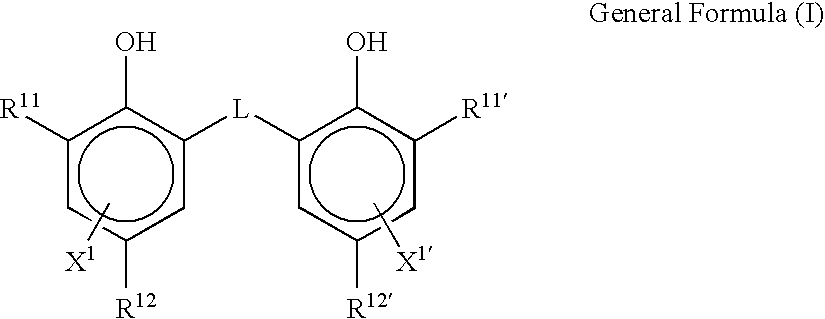Silver halide photographic emulsion and thermally developable photosensitive material
a technology of silver halide and photographic emulsion, which is applied in the field of silver halide photographic emulsion, can solve the problems of difficult sulfur sensitization of silver iodide grains, unsatisfactory image quality, and few concrete knowledge so far of effective chemical sensitization
- Summary
- Abstract
- Description
- Claims
- Application Information
AI Technical Summary
Benefits of technology
Problems solved by technology
Method used
Image
Examples
example 1
To a reaction vessel containing 1400 ml of water at 70.degree. C. containing 36 g of gelatin, 724 ml of an aqueous solution containing 74 g of silver nitrate and 800 ml of an aqueous solution containing 113 g of potassium iodide were added simultaneously, while stirring the solution, by a controlled double jet method so as to keep a silver potential at +60 mV for 200 min. Then, desalination and water washing were conducted by an ultrafiltration method and, after dissolving gelatin additionally, pH was adjusted to 5.9 and pAg to 7.5. The obtained silver iodide grains had an average grain size of 0.14 .mu.m and the variation coefficient of the grain size was 21%.
After dispensing the emulsion into 8 portions and elevating the temperature to 60.degree. C., pAg for each of them was adjusted as shown in Table 1 and then a sulfur sensitizer (sodium thiosulfate) and a gold sensitizer (chloroauric acid) were added each in such an amount to give an optimal sensitization, which provide a maxim...
example 2
In the same manner as in Example 1, silver iodide emulsions were prepared except for the change of the temperature of the reaction vessel to 33.degree. C., of the silver potential to +10 mV and of the addition time for silver nitrate and potassium iodide to 60 min. Then, desalination and, water washing were conducted by a ultrafiltration method and after dissolving gelatin additionally, pH was adjusted to 5.9 and pAg was adjusted to 7.5. The obtained silver iodide grains had an average size of 42 nm and the variation coefficient of the grain size was 19%.
After dispensing the emulsion into 10 portions and elevating the temperature to 54.degree. C., and after controlling the pAg for each of them as shown in Table 2, tellurium sensitizer (bis(N-phenyl-N-methyl carbamoyl) telluride), selenium sensitizer (pentafluorophenyl-triphenyl phosphine selenide), sulfur sensitizer (sodium thiosulfate) and, optionally, a reduction sensitizer (dimethylamine borane, simply referred to as DMAB) were a...
example 3
1. Preparation of PET Support and Undercoating
1-1. Film Preparation
Using terephthalic acid and ethylene glycol, PET having an intrinsic viscosity: IV=0.66 (measured in phenol / tetrachloroethane=6 / 4 (weight ratio) at 25.degree. C.) was obtained in accordance with an ordinary method. After pelleting the same, it was dried at 130.degree. C. for 4 hours, melted at 300.degree. C. and incorporated with 0.04 wt % of a dye BB of the following structure. Then, it was extruded from a T-die and quenched to prepare a unstretched film having a thickness of 175 .mu.m after heat fixing. ##STR14##
Then, it was stretched longitudinally by 3.3 times using rolls having different peripheral speeds and then laterally stretched by 4.5 times by a tenter. The temperature in this process was 110.degree. C. and 130.degree. C., respectively. Then, after heat fixing at 240.degree. C. for 20 sec, it was relaxed by 4% at the same temperature in the lateral direction. Then, after slitting the chuck portion of the t...
PUM
| Property | Measurement | Unit |
|---|---|---|
| grain size | aaaaa | aaaaa |
| temperature | aaaaa | aaaaa |
| grain size | aaaaa | aaaaa |
Abstract
Description
Claims
Application Information
 Login to View More
Login to View More - R&D
- Intellectual Property
- Life Sciences
- Materials
- Tech Scout
- Unparalleled Data Quality
- Higher Quality Content
- 60% Fewer Hallucinations
Browse by: Latest US Patents, China's latest patents, Technical Efficacy Thesaurus, Application Domain, Technology Topic, Popular Technical Reports.
© 2025 PatSnap. All rights reserved.Legal|Privacy policy|Modern Slavery Act Transparency Statement|Sitemap|About US| Contact US: help@patsnap.com



